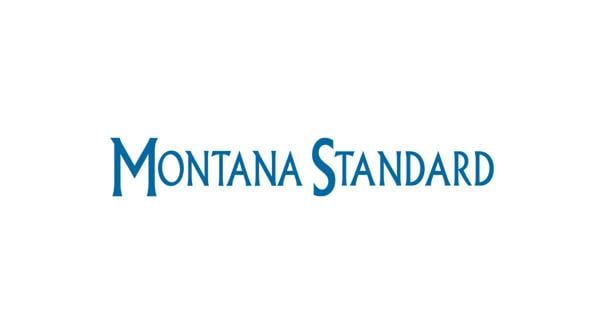ANCHORAGE, Alaska – When it comes to health care in rural America, every state faces major challenges. Then there’s Alaska, where everything is more extreme.
Bigger. Colder. Less accessible.
Fewer people, farther apart, often several hours from the care they need.
Whether it’s an emergency, day-in-day-out treatment or prevention, Alaskans face circumstances unlike those faced by most folks in the Lower 48.
So, how does the Alaska health care system handle all this?
The answer primarily goes down two paths.
For about 80% of Alaskans, the model is built around the same multilayered blend of public and private options that most Americans face, albeit with the heightened degrees of difficulty that come with living here.
The other roughly 20% are Alaska Native and American Indian people. Their care is through the Alaska Tribal Health System. Known as the “beneficiary” system, it features expansive facilities in Anchorage, regional hubs and its backbone: community health aides. These are locals trained to care for their neighbors.
Whichever path a person in Alaska takes, their care comes down to one thing.
Alaska is like anywhere else, in that the chain of survival is only as strong as the weakest link. The difference is, because they constantly battle those extremes, Alaskans are tougher than most people. They’ve learned to turn the weakness of a lack of resources into a strength: resourcefulness. It shows up in the way people look out for each other.
It can be as simple as sharing a bowl of seal soup. Or as complex as what happened one day when a small plane carrying a couple and their 9-month-old baby crashed into a river: A witness attached a rope to himself and his all-terrain vehicle, then he waded into the water to grab the baby. The dad followed them ashore, but the mom wound up ashore on the other side of the river. Someone else used their helicopter to ferry her to the other side so rescue workers could fetch them all at once.
“It sounds entirely fantastical,” said Dr. Lucy He, a neurosurgeon in Anchorage who treated the baby. “But it’s pretty much what Alaska is like.”
“We all know that there’s not really a backup,” said Amber Simonetti, who came to Alaska a decade ago as a traveling nurse and now oversees care of chest pain and stroke patients at Mat-Su Regional Medical Center in Palmer, about 45 minutes northeast of Anchorage. “‘Alaska is a very small town’ is one of the expressions that you hear. You use the resources that you have, and you do the very best that you can.”
With that broad view of the situation in place, it’s time to get a bit more specific.
Below are some key questions, with answers based on reporting in the two biggest cities, Anchorage and Fairbanks, and in Port Graham (population of about 150, accessible only by air or water), as well as interviews with patients and caregivers.
The biggest issue? How big it is
At 665,384 square miles of land and water, Alaska is by far the biggest U.S. state.
To understand how enormous that is requires some perspective.
Many Alaskans boast that their state is twice as big as Texas, the next-biggest state. Others go a step further, noting that if Alaska were split in half, each section would be bigger than Texas.
Locals also encourage doing this: Crank your right hand counterclockwise until your thumb points down. Curl all fingers, except the pointer. This is a good approximation of the state’s shape; well, most of it. Another chunk – which includes Juneau, the capital – starts at the lower part of your wrist and stretches about an inch. This exercise is to set up this: The real-life distance from the knuckle of your ring finger (Point Hope) to the end of the stretch up the forearm (Ketchikan) is over 1,400 miles, about the distance from Los Angeles to Little Rock, Arkansas.
For all of Alaska’s geographic sprawl, massive sections are uninhabited by people. Katmai National Park and Preserve is bigger than the combined size of Rhode Island and Delaware, yet its only residents are grizzly bears, caribou and other wildlife.
The city of Seattle has more people than the entire state of Alaska (736,812). With more than half of them living in and around Anchorage, that leaves not very many Alaskans spread thinly across the vast majority of this wide-stretched state.
Looking at a map of Alaska’s highways and byways, you might wonder, “Where are the rest of the roads?”
Alaska has only slightly more miles of paved roads than New Hampshire and a lot less than Connecticut. As a result, most of the 355 places in Alaska acknowledged by the U.S. Census Bureau are considered “off the road system.”
With driving often not an option, folks fly. About 1 in 78 Alaska residents are pilots, by far the top ratio in the nation. Similarly, about 1 in every 33 registered aircraft in the entire country is based here. (That’s why a private helicopter supporting a small plane crash was a nifty only-in-Alaska anecdote.)
Boats are crucial modes of transportation, too. That is, until lakes and rivers freeze. Then again, some waterways freeze so solidly that they become drivable. The state even runs snowplows over them to keep traffic flowing. During those months, ATVs, snowmobiles (known locally as snowmachines) and even dog sleds become reliable ways of getting around.
All treks are easiest during June, July and August, when there’s sunlight for about 21 hours a day.
In all other months, snow is possible.
Even in the “warm” spots, it routinely freezes by October and doesn’t let up until late April. Once the temperature starts sinking, it can keep going – and that’s before factoring in the wind. This is why most vehicles have plugs dangling out of the front grill. They come from warmers that thaw the engine and battery to help the vehicle start during the most brutal conditions.
“We had a competition (in 2021) of who went on the coldest flight,” said Matthew Kuhns, a critical care nurse for the Fairbanks-based crew of an air ambulance company. “A couple of different teams did negative-54.”
There’s one more thing to know about the winter.
Payback for the delight of all that daylight in the summer is the sun making only cameo appearances for stretches that can last weeks, even months. The extended darkness adds an emotional test on top of all the physical ones.
About the tribal health system
In 1953, a new hospital opened in Anchorage devoted to Alaska Natives. In 1955, the facility was overseen by the Indian Health Service, a bureau of the U.S. Public Health Service. And in 1959, Alaska became a state.
As all that came together, a tuberculosis epidemic raged across the state. It came under control thanks to Alaska Natives getting trained to deliver vaccinations in their communities. Realizing they might be on to something, the IHS turned to these workers – community health aides – to provide more medical care. In 1968, federal legislation expanded the CHA program and, most importantly, funded it.
Things really got rolling in the 1990s. First came a new $170 million hospital for Alaska Natives in Anchorage. Then various tribal health organizations came under the umbrella of the Alaska Native Tribal Health Consortium, creating the nation’s first tribally managed health care system.
This tribal health system is often described as a hub-and-spoke model. It’s powered by around 3,000 full-time workers, making ANTHC among the state’s largest employers.
“It’s a team approach and a coordinated effort,” said Dr. Brian Trimble, a neurologist who’s been with ANTHC for 35 years. “I like to use the sandbox analogy. If you don’t play well in the sandbox, you don’t stay here long.”
The sandbox has three levels.
There’s the Anchorage headquarters, which provides comprehensive services.
Then there are the regional hospitals, where many tests and various types of imaging and procedures can be done.
And, finally, there are the clinics in each community. These offer the basics a patient might need, and people who can figure out the rest. Community health aides serve as the eyes, ears and hands of specialists, especially in an emergency.
Another distinguishing characteristic of this system: The federal government is obliged to pay all bills.
What happens when there’s a heart attack, stroke or other emergency?
This is when that chain of survival kicks in.
The farther the problem is from Anchorage or Fairbanks, the more likely it’ll require a helicopter or airplane – thus, a medevac. The term itself is a mashup of “medical evacuation.” Becoming one of these specialists requires far more training than land-bound first responders.
Medevacs transport Alaskans in both the beneficiary and non-beneficiary systems. A frequent challenge is deciding where to take them. A regional hub? Anchorage? Somewhere in the Lower 48? That decision must be made with an eye on the clock. It’s especially true for someone having a heart attack or stroke because potentially lifesaving treatments must be administered within a certain amount of time.
How can Alaskans improve their health?
The best way to treat a medical problem is by preventing it. When it comes to preventing heart attacks and strokes, that starts with making certain lifestyle choices.
In Alaska, they take extra effort.
Want to eat a healthy diet? There’s less access to fresh fruits and vegetables, and prices are higher. Bad weather can throw off the distribution system, limiting deliveries to cities as well as villages.
Want to exercise? Motivation wanes when it’s too cold and/or dark outside to walk, run or ride a bicycle. It’s not safe, either. Community gyms are an option in some places, but don’t exist in many others.
Want to see a health care professional? Regular checkups are easy enough, especially with telehealth having been widely adopted decades before the COVID-19 pandemic made it common everywhere.
But some visits require equipment only available at a regional hub or in Anchorage. Traveling is inconvenient, and it’s especially difficult for anyone who’s frail.
Living in Alaska clearly requires dealing with a lot. Yet living in Alaska also means going camping on glaciers and fishing for every variety of salmon. Wildlife-watching is spectacular. And if you really want to see something amazing, visit Fairbanks from mid-September to late April for the aurora borealis, or northern lights.
“Alaska’s not for everyone,” said Mike Plotnick, a third-generation Alaskan who went to college in Hawaii then returned. “There’s a lot of true wildernesses and, yeah, it can be dangerous. But it’s exciting.”
For He, she first visited Anchorage because she got a free trip. It was for a job interview. She found herself so smitten by the opportunity, the landscape and the people that it’s been her home since 2018.
“I think one of the true things about Alaska and Alaskans is that they are here because they want to be here,” she said. “It’s a combination of how independent and free we can be.”
When asked about health care in Alaska today compared to when they started, all professional caregivers interviewed said things are much better.
All listed education and awareness among the reasons. They also said the path to a healthier Alaska is paved by even more education and awareness.
“If all you ever treat are emergencies, then all you’ll ever treat are emergencies,” said Genny Miller, a longtime community health aide.
It starts with encouraging people to stay on top of their health. For instance, teaching people to monitor their blood pressure reduces risks for many problems.
Another tool is teaching more people how to perform CPR and use an automated external defibrillator, or AED. Teaching the warning signs of a heart attack and stroke can be a difference-maker, too.
Showing Alaskans new ways to eat healthy when fresh produce is scarce and ways to exercise indoors in winter are more potential game-changers.
Put it this way: Every bit of education and awareness fortifies the links in the chain of survival.
Make those links stronger. Tougher.
American Heart Association News sent reporters to five states to cover rural health challenges, and how people in rural America are working to overcome them.
covers heart and brain health. Not all views expressed in this story reflect the official position of the American Heart Association. Copyright is owned or held by the American Heart Association, Inc., and all rights are reserved.





